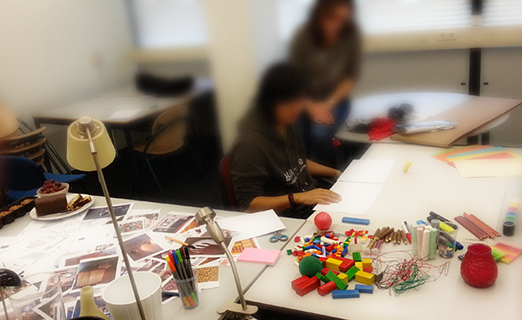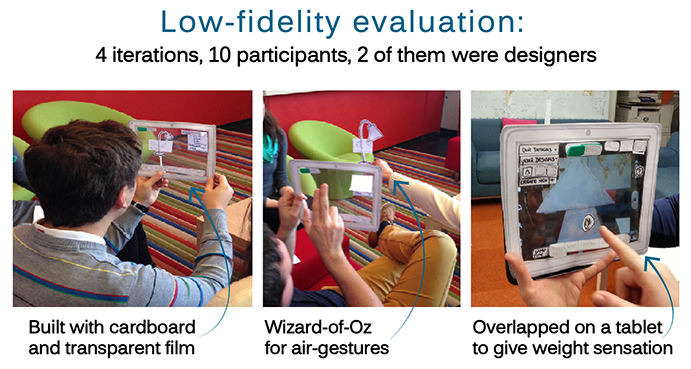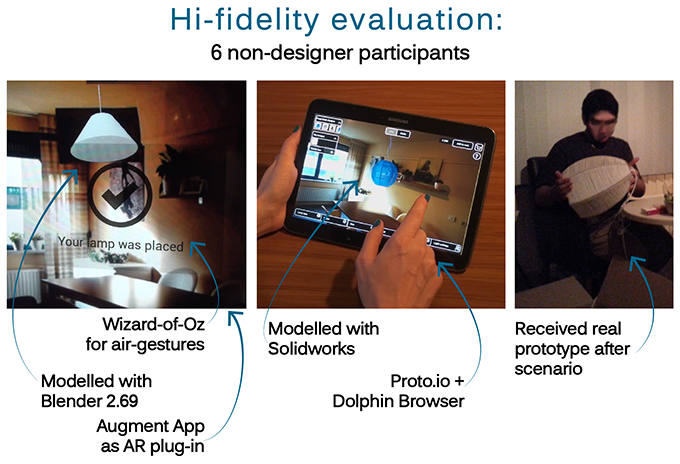Fraai-Werk
Augmented reality lamp customization tool
This Application (App) lets users customize their lamp while visualizing it in the context where they will place it with the aid of Augmented Reality. In this process, users can get inspiration from pre-designed lamps and expert advice, create their own lamps, and save and compare versions before the purchase.

Results
Design interface and interactions

The interface design has the following features:
- AR allows to place and show the product in context.
- A 3D model of the lamp can be placed and visualized in the desired room position.
- The realism of the 3D model is increased as the user selects the desired attributes.
- The final visualization is trustworthy and exactly represent the product they are going to receive.
- Multiple starting points are provided for different types of users. Users can explore predesigned lamps or start from scratch with their own design.
- Tips on each customizable attribute are shown to provide support to the users.
- Users can change each attribute in the order they like and go back and forth.
- The set of customizable attributes should be limited each time.
- Static- and Live-views were designed to prevent fatigue when using AR. The Live-view provides real time visualization of the lamp in AR, allowing the user to see different lamp perspectives. The Static-view shows a picture representing one particular view of the room as a background for the lamp customization.
Android AR Demo Application
The final design was programmed in an Android Augmented Reality application by Felix Dollack and Monica Perusquía-Hernández.
The application uses Google's ARCore library for Android.
Users enjoyed the customization process and expressed satisfaction that the app would enable them to create a lamp that is personalized and unique. The methods applied are useful for the design of other product configurators.
Method

Nowadays, people are willing to pay for personalized items that satisfy their preferences and distinguish them. Previous work has provided generic customization tools design guidelines. First, user research was conducted to gather specific user requirements for the application at hand.
In this phase two qualitative studies were performed:
- contextual interviews to explore users’ thoughts and interests in customization products
- a participatory study to gain more insights into the customization process of lamps.
Finally, in order to prioritise user needs and define a final set of requirements, an online survey was run.
The results of three user studies showed that customers’ needs are preference fit, inspiration and help, freedom and support during the customization process, and trustworthy visualizations.
Using these requirements, a solution that enables users to design lamps that fit their needs and the interior design of their home was proposed. The app was designed following a user-centered design approach. Through this method, the features of the app were carefully selected to make sure the most relevant user needs were met.
The solution was the Augmented Reality (AR) tablet application that allows customization in context to meet their specific needs. Low and high-fidelity prototypes were created in several iterations. On each iteration, the prototype was improved. A highlight is our novel technique to prototype AR applications using paper and transparent film.


Based on the results from the user research, the design was detailed and prototyped iteratively.
The app was prototyped and tested in low and high fidelity levels, in 5 iterations with 16 participants as shown below.


Resulting academic publications and presentations
| Palumbo, C., Kriening, H., Wajda, B., Perusquía-Hernández, M. “Understanding User Needs: Requirements for an Augmented Reality Lamp Customization Tool”. Proceedings of the Design and Semantics of Form and Movement Conference, XI Edition (DeSForM19), pp. 252-255. 2019. | Paper Poster |
| Perusquía-Hernández, M., Kriening, H., Palumbo, C., Wajda, B., “User-Centered Design of a Lamp Customization Tool”, Proceedings of the 5th Augmented Human International Conference, Article 36, 2 pages. 2014. DOI:10.1145/2582051.2582087 | Paper Poster |
| Technical Report | Report Presentation |